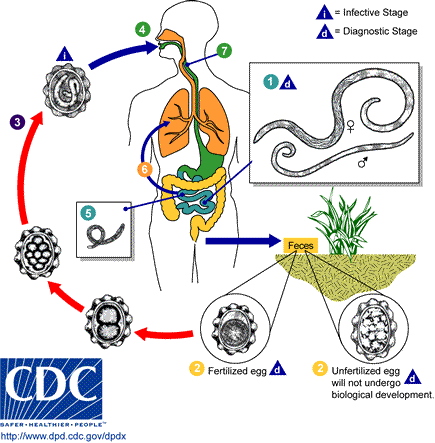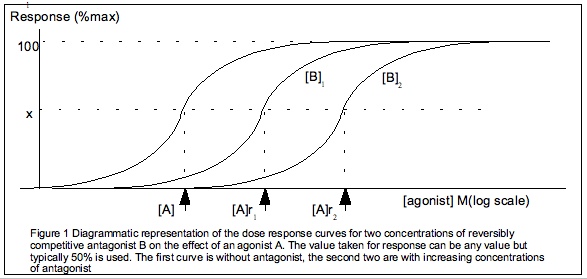|
Zanthoxylum Zanthoxyloides
''Zanthoxylum zanthoxyloides'', also called Senegal prickly-ash or artar root, is a plant species in the genus ''Zanthoxylum''. The plant contains isomeric divanilloylquinic acids (3,4-O-divanilloylquinic acid or burkinabin A, 3,5-O-divanilloylquinic acid or burkinabin B and 4,5-O-divanilloylquinic acid or burkinabin C). Burkinabin C, a type of hydrolysable tannin can be found in the root bark of ''F. zanthoxyloides''. It also contains fagaronine, a benzophenanthridine alkaloid. A study by Williams, Soelberg and Jäger (2016) showed than ethanolic extracts of ''Z. zanthoxyloides'' have ''in vitro'' anthelmintic properties against the nematode ''Ascaris suum'', a swine parasitism, parasite that is closely related to the human parasite ''Ascaris lumbricoides, A. lumbricoides''. The half maximal effective concentration (EC50) values were 94 μg/mL and 132 μg/mL, for roots and root bark, respectively. The authors concluded that these results encourage further investigation of the us ... [...More Info...] [...Related Items...] OR: [Wikipedia] [Google] [Baidu] |
Jean-Baptiste Lamarck
Jean-Baptiste Pierre Antoine de Monet, chevalier de Lamarck (1 August 1744 – 18 December 1829), often known simply as Lamarck (; ), was a French naturalist, biologist, academic, and soldier. He was an early proponent of the idea that biological evolution occurred and proceeded in accordance with Naturalism (philosophy), natural laws. Lamarck fought in the Seven Years' War against Prussia, and was awarded a commission for bravery on the battlefield. Posted to Monaco, Lamarck became interested in natural history and resolved to study medicine.#Packard, Packard (1901), p. 15. He retired from the army after being injured in 1766, and returned to his medical studies. Lamarck developed a particular interest in botany, and later, after he published the three-volume work ''Flore françoise'' (1778), he gained membership of the French Academy of Sciences in 1779. Lamarck became involved in the Jardin des Plantes and was appointed to the Chair of Botany in 1788. When the French Nationa ... [...More Info...] [...Related Items...] OR: [Wikipedia] [Google] [Baidu] |
Nematode
The nematodes ( or ; ; ), roundworms or eelworms constitute the phylum Nematoda. Species in the phylum inhabit a broad range of environments. Most species are free-living, feeding on microorganisms, but many are parasitic. Parasitic worms (helminths) are the cause of soil-transmitted helminthiases. They are classified along with arthropods, tardigrades and other moulting animals in the clade Ecdysozoa. Unlike the flatworms, nematodes have a tubular digestive system, with openings at both ends. Like tardigrades, they have a reduced number of Hox genes, but their sister phylum Nematomorpha has kept the ancestral protostome Hox genotype, which shows that the reduction has occurred within the nematode phylum. Nematode species can be difficult to distinguish from one another. Consequently, estimates of the number of nematode species are uncertain. A 2013 survey of animal biodiversity suggested there are over 25,000. Estimates of the total number of extant species are su ... [...More Info...] [...Related Items...] OR: [Wikipedia] [Google] [Baidu] |
Ascariasis
Ascariasis is a disease caused by the parasitic roundworm ''Ascaris lumbricoides''. Infections have no symptoms in more than 85% of cases, especially if the number of worms is small. Symptoms increase with the number of worms present and may include shortness of breath and fever at the beginning of the disease. These may be followed by symptoms of abdominal swelling, abdominal pain, and diarrhea. Children are most commonly affected, and in this age group the infection may also cause poor weight gain, malnutrition, and learning problems. Infection occurs by ingesting food or drink contaminated with ''Ascaris'' eggs from feces. The eggs hatch in the intestines, the larvae burrow through the gut wall, and migrate to the lungs via the blood. There they break into the Pulmonary alveolus, alveoli and pass up the Vertebrate trachea, trachea, where they are coughed up and may be swallowed. The larvae then pass through the stomach a second time into the intestine, where they become adul ... [...More Info...] [...Related Items...] OR: [Wikipedia] [Google] [Baidu] |
EC50
] Half maximal effective concentration (EC50) is a measure of the concentration of a drug, antibody or toxicant which induces a stimulus–response model, biological response halfway between the baseline and maximum after a specified exposure time. More simply, EC50 can be defined as the ''concentration required to obtain a 50% ..effect'' and may be also written as sub>50. It is commonly used as a measure of a drug's potency, although the use of EC50 is preferred over that of 'potency', which has been criticised for its vagueness. EC50 is a measure of concentration, expressed in molar units (M), where 1 M is equivalent to 1 mol/ L. The EC50 of a ''graded'' dose response curve therefore represents the concentration of a compound where 50% of its maximal effect is observed. The EC50 of a ''quantal'' dose response curve represents the concentration of a compound where 50% of the population exhibit a response, after a specified exposure duration. For clarification, ... [...More Info...] [...Related Items...] OR: [Wikipedia] [Google] [Baidu] |
Ascaris Lumbricoides
''Ascaris lumbricoides'' is a large parasitic worm, parasitic Nematoda, roundworm of the genus ''Ascaris.'' It is the most common parasitic worm in humans. An estimated 807 million–1.2 billion people are infected with ''Ascaris lumbricoides'' worldwide. People living in tropics, tropical and subtropics, subtropical countries are at greater risk of infection. Infection by ''Ascaris lumbricoides'' is known as ascariasis. It has been proposed that ''Ascaris lumbricoides'' and ''Ascaris suum'' (pig roundworm) are the same species. Life cycle ''Ascaris lumbricoides'', a roundworm, infects humans via the fecal-oral route. Eggs released by adult females are shed in feces. Unfertilized eggs are often observed in fecal samples but never become infective. Fertilized eggs embryonate and become infectious after 18 days to several weeks in soil, depending on the environmental conditions (optimum: moist, warm, shaded soil).Parasites - Ascariasis. (14 February 2018). Retrieved from https:/ ... [...More Info...] [...Related Items...] OR: [Wikipedia] [Google] [Baidu] |
Parasitism
Parasitism is a close relationship between species, where one organism, the parasite, lives (at least some of the time) on or inside another organism, the host, causing it some harm, and is adapted structurally to this way of life. The entomologist E. O. Wilson characterised parasites' way of feeding as "predators that eat prey in units of less than one". Parasites include single-celled protozoans such as the agents of malaria, sleeping sickness, and amoebic dysentery; animals such as hookworms, lice, mosquitoes, and vampire bats; fungi such as honey fungus and the agents of ringworm; and plants such as mistletoe, dodder, and the broomrapes. There are six major parasitic strategies of exploitation of animal hosts, namely parasitic castration, directly transmitted parasitism (by contact), trophicallytransmitted parasitism (by being eaten), vector-transmitted parasitism, parasitoidism, and micropredation. One major axis of classification concerns invasiveness: ... [...More Info...] [...Related Items...] OR: [Wikipedia] [Google] [Baidu] |
Swine
Suina (also known as Suiformes) is a suborder of omnivorous, non-ruminant artiodactyl mammals that includes the domestic pig and peccaries. A member of this clade is known as a suine. Suina includes the family Suidae, termed suids, known in English as pigs or swine, as well as the family Tayassuidae, termed tayassuids or peccaries. Suines are largely native to Africa, South America, and Southeast Asia, with the exception of the wild boar, which is additionally native to Europe and Asia and introduced to North America and Australasia, including widespread use in farming of the domestic pig subspecies. Suines range in size from the 55 cm (22 in) long pygmy hog to the 210 cm (83 in) long giant forest hog, and are primarily found in forest, shrubland, and grassland biomes, though some can be found in deserts, wetlands, or coastal regions. Most species do not have population estimates, though approximately two billion domestic pigs are used in farming, while ... [...More Info...] [...Related Items...] OR: [Wikipedia] [Google] [Baidu] |
Ascaris Suum
''Ascaris suum'', also known as the large roundworm of pig, is a parasitic nematode that causes ascariasis in pigs. While roundworms in pigs and humans are today considered as two species (''A. suum'' and '' A. lumbricoides'') with different hosts, cross-infection between humans and pigs is possible; some researchers have thus argued they are the same species. Ascariasis is associated with contact to pigs and pig manure in Denmark. ''A. suum'' is distributed worldwide and grows up to in length. ''Ascaris'' infections are treated with ascaricides. ''A. suum'' is in the family Ascarididae, and is one of the oldest associations to mankind. Life cycle Pigs get infected with ''A. suum'' by ingesting infectious parasite eggs that are present in the environment. The larvae of Ascaris complete two moults within the egg; therefore, the larvae emerging from the egg is not a second-stage larva (L2) as was previously presumed, but rather a third stage larva (L3) covered by a loosened ... [...More Info...] [...Related Items...] OR: [Wikipedia] [Google] [Baidu] |
Bernhard Zepernick
Bernhard is both a given name and a surname. Notable people with the name include: Given name *Bernhard of Saxe-Weimar (1604–1639), Duke of Saxe-Weimar * Bernhard, Prince of Saxe-Meiningen (1901–1984), head of the House of Saxe-Meiningen 1946–1984 * Bernhard, Count of Bylandt (1905–1998), German nobleman, artist, and author *Prince Bernhard of Lippe-Biesterfeld (1911–2004), Prince Consort of Queen Juliana of the Netherlands * Bernhard, Margrave of Baden (born 1970), German prince * Bernhard Beibl (born 1979), Austrian musician * Bernhard Frank (1913–2011), German SS Commander * Bernhard Garside (born 1962), British diplomat * Bernhard Goetzke (1884–1964), German actor * Bernhard Grill (born 1961), one of the developers of MP3 technology * Bernhard Hantzsch (1875-1911), German ornithologist, Arctic researcher, and writer * Bernhard Heiliger (1915–1995), German sculptor * Bernhard Höfler (born 1986), Austrian politician * Bernhard Langer (born 1957), German golfer ... [...More Info...] [...Related Items...] OR: [Wikipedia] [Google] [Baidu] |
Fagaronine
Fagaronine is a benzophenanthridine alkaloid found in ''Zanthoxylum zanthoxyloides'' and other species in the genus ''Zanthoxylum ''Zanthoxylum'' is a genus of about 250 species of deciduous and evergreen trees, shrubs and climbers in the Family (biology), family Rutaceae that are native to warm temperate and Subtropics, subtropical areas worldwide. It is the type gen ...''. References External links www.brenda-enzymes.org Isoquinoline alkaloids Quinoline alkaloids Methoxy compounds Quaternary ammonium compounds Heterocyclic compounds with 4 rings Hydroxyarenes {{Alkaloid-stub ... [...More Info...] [...Related Items...] OR: [Wikipedia] [Google] [Baidu] |
Burkinabin C
Burkinabin C is a di vanilloyl quinic acid found in the root bark of ''Fagara zanthoxyloides'' (''Zanthoxylum zanthoxyloides ''Zanthoxylum zanthoxyloides'', also called Senegal prickly-ash or artar root, is a plant species in the genus ''Zanthoxylum''. The plant contains isomeric divanilloylquinic acids (3,4-O-divanilloylquinic acid or burkinabin A, 3,5-O-divanilloylq ...''). References Hydrolysable tannins O-methylated natural phenols {{phenol-stub ... [...More Info...] [...Related Items...] OR: [Wikipedia] [Google] [Baidu] |






